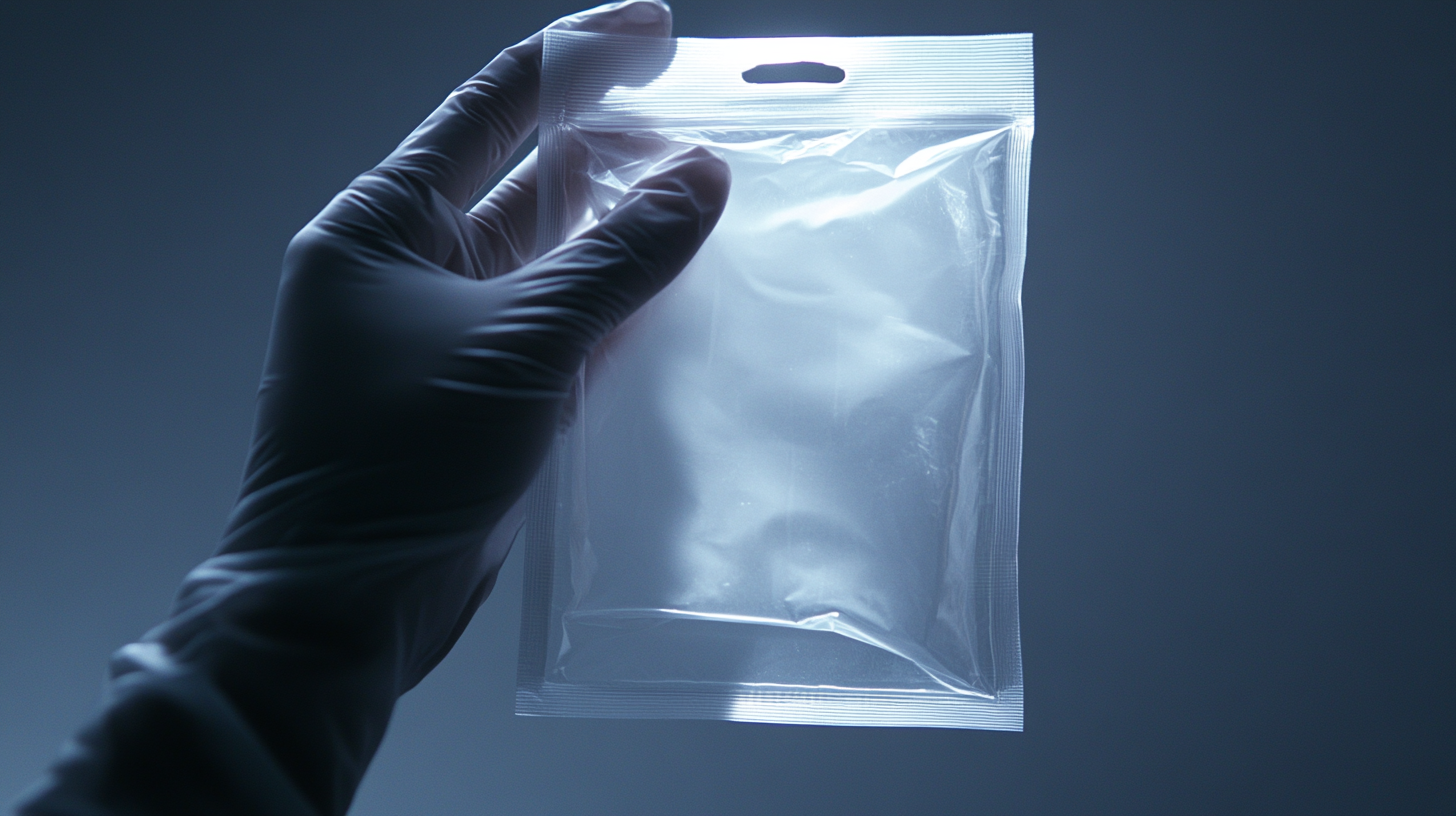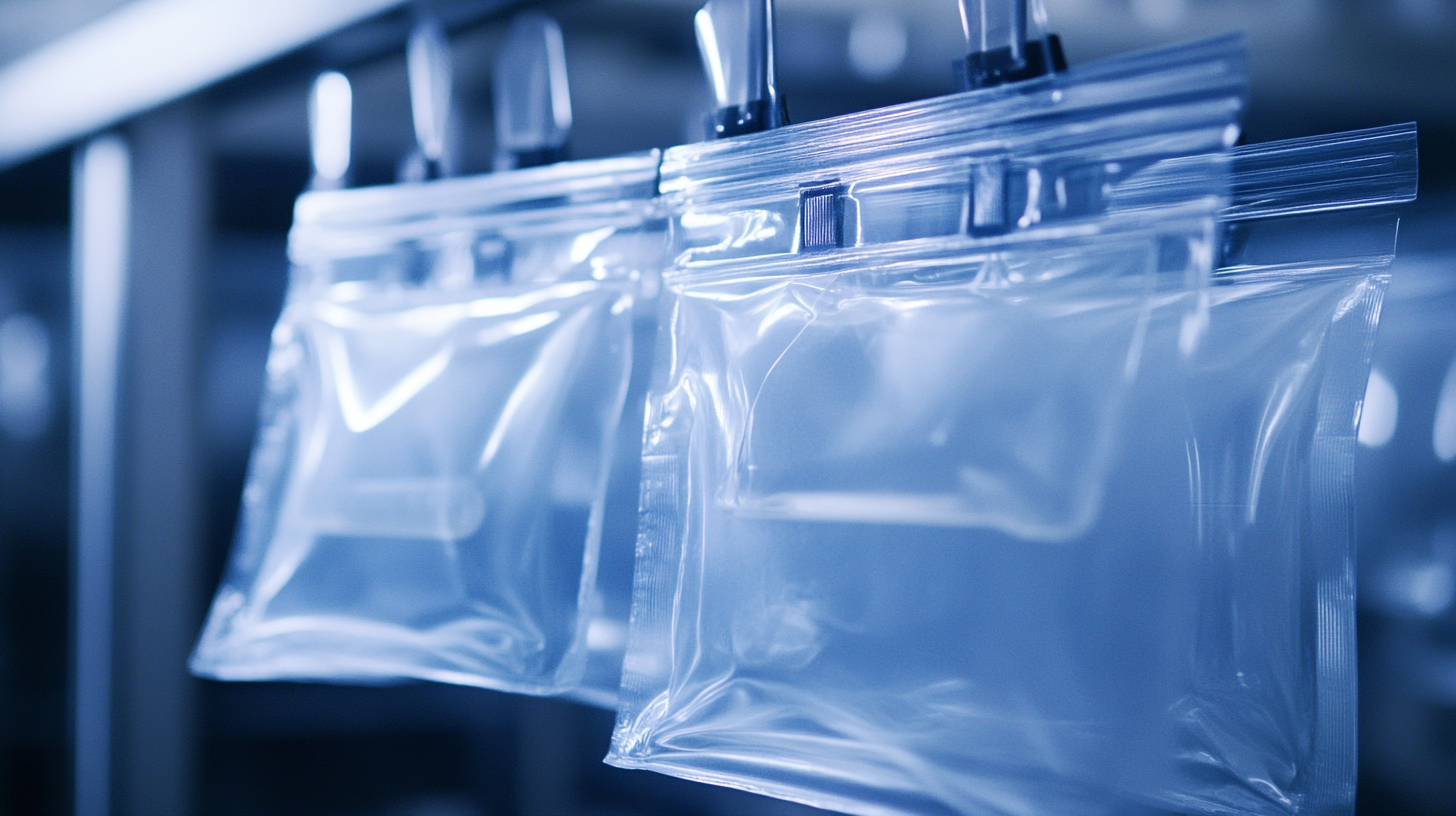 +86 178 5514 5298
+86 178 5514 5298
Leave Your Message
-
 CONTACT NUMBER
CONTACT NUMBER -
 CONTACT NUMBER
CONTACT NUMBER -
 CONTACT NUMBER
CONTACT NUMBER



In today's rapidly evolving industrial landscape, the efficient handling and transportation of specimens are paramount across various sectors such as healthcare, pharmaceuticals, and environmental science. The innovative uses of the best 95 kPa specimen bag have gained significant attention due to their remarkable ability to maintain sample integrity while minimizing contamination risks. According to a recent market research report, the global specimen bag market is projected to reach USD 1.2 billion by 2026, driven by increasing demand for safe and reliable specimen management. The 95 kPa specimen bag, specifically designed to withstand pressure changes, is increasingly favored for its robust material properties and versatility. This blog will explore the innovative applications of this essential tool across different industries, highlighting how it addresses specific challenges faced in specimen collection and transit, ultimately contributing to improved accuracy and efficiency in various analytical processes.

The healthcare industry continually seeks innovative solutions to enhance patient care and streamline operational efficiency. One such advancement is the use of 95 kPa specimen bags, which have transformed laboratory processes in hospitals. According to a recent report by the Healthcare Engineering Society, the integration of specialized specimen bags has improved sample integrity and reduced contamination rates by over 30%. This innovation ensures that test results are accurate, leading to better patient outcomes and timely diagnosis.
Moreover, 95 kPa specimen bags facilitate better transport of samples, maintaining the necessary pressure and temperature conditions during transit. A study published in the Journal of Clinical Pathology highlighted that hospitals utilizing these bags experienced a 20% decrease in specimen rejection rates due to mishandling, directly impacting the efficiency and speed of patient care.
**Tips:** To maximize the benefits of using 95 kPa specimen bags, ensure that staff is properly trained on handling and sealing techniques. Regular audits of transport processes can also help identify areas for improvement, ensuring samples remain secure throughout their journey. Lastly, consider integrating barcode systems with these bags for better tracking and management of specimens, further enhancing workflow efficiency.

The 95 kPa specimen bag has gained recognition not only for its practical applications in laboratories but also for its significant role in waste management strategies. With the growing concern for environmental sustainability, these bags are engineered from materials that minimize contamination and are often designed for easier recycling. This reduces the environmental footprint associated with hazardous waste disposal and helps streamline the waste management process in various industries.
To maximize the environmental benefits of 95 kPa specimen bags, consider implementing a comprehensive waste sorting system within your organization. By training staff to distinguish between recyclable and non-recyclable materials, you enhance the efficiency of waste disposal. Moreover, collaborating with manufacturers who prioritize sustainable practices can help ensure that your bags are disposed of responsibly.
Additionally, always aim to use these bags to their full capacity. Packing efficiently not only reduces the number of bags needed but also minimizes the overall waste generated. Explore creative ways of utilizing these bags in different departments to encourage a culture of environmental awareness throughout your organization.
This chart illustrates the innovative applications of 95 kPa specimen bags across various industries, highlighting their environmental impact in waste management strategies. The data showcases the percentage use of specimen bags in different sectors, emphasizing their effectiveness in promoting eco-friendly practices.
In the food industry, ensuring the quality and safety of products is paramount, and the 95 kPa specimen bag plays a crucial role in achieving this goal. These specialized bags are designed to create a vacuum-sealed environment that minimizes oxygen exposure, thereby prolonging the freshness of food items. The bags are used for transporting both raw and cooked foods, preventing spoilage and contamination. Their strength and durability make them ideal for various temperature ranges, ensuring that food maintains its intended quality during transit.
Tips for using 95 kPa specimen bags effectively include ensuring that the bags are filled to no more than 80% capacity. This allows for appropriate air removal and optimal sealing. Additionally, always check for any leaks or damages before use, as integrity is key in maintaining the food's safety.
For businesses handling perishable products, labeling the bags with dates and contents aids in inventory management and enhances traceability in case of quality concerns.
Furthermore, it’s essential to train staff on proper sealing techniques to prevent air leaks. When storing food items in these bags, consider incorporating moisture-absorbing pads for items that may release liquid. This would help maintain the quality and extend the shelf life of products stored in 95 kPa specimen bags.
In the realm of research laboratories, the integrity of samples is paramount for accurate analysis and reliable results.
The innovative 95 kPa specimen bags play a critical role in this aspect, providing a controlled environment that minimizes the risk of contamination and degradation.
According to a report by the National Institutes of Health, improper handling and storage of biological samples can lead to a 30% increase in variance in experimental results.
By utilizing 95 kPa specimen bags, labs can effectively safeguard their samples against external factors, ensuring the integrity of their data and improving reproducibility.
Moreover, these specimen bags offer enhanced usability features that facilitate the handling of samples, such as
secure sealing mechanisms and transparent materials for easy identification.
A study published in the Journal of Laboratory Automation highlights that labs equipped with advanced specimen storage solutions, like 95 kPa bags, reported a
25% increase in operational efficiency.
This efficiency gain not only accelerates the research process but also allows scientists to allocate more time to data analysis and interpretation, further driving innovation across various fields of study.
As we approach 2025, the evolution of packaging solutions will be significantly influenced by the innovative features of 95 kPa specimen bags. These bags are not just high-performance packaging options; they represent a shift toward sustainability and efficiency across various industries. With their vapor barrier properties and puncture resistance, 95 kPa specimen bags are set to enhance product preservation, reduce spoilage, and ensure safety during transportation. Businesses are increasingly prioritizing eco-friendly materials and designs that minimize environmental impact, making these specimen bags a frontrunner in responsible packaging solutions.
Moreover, the versatility of 95 kPa specimen bags allows for application in diverse sectors such as pharmaceuticals, food and beverage, and even electronics. In the pharmaceutical industry, for example, these bags can help maintain the integrity of sensitive materials, ensuring that products reach consumers in optimal condition. In the food industry, their ability to extend shelf life can lead to reduced waste and improved food safety standards. By 2025, we can expect to see a surge in the adoption of 95 kPa specimen bags, as companies leverage their advantages to meet both regulatory requirements and consumer demands for high-quality, sustainable products.

